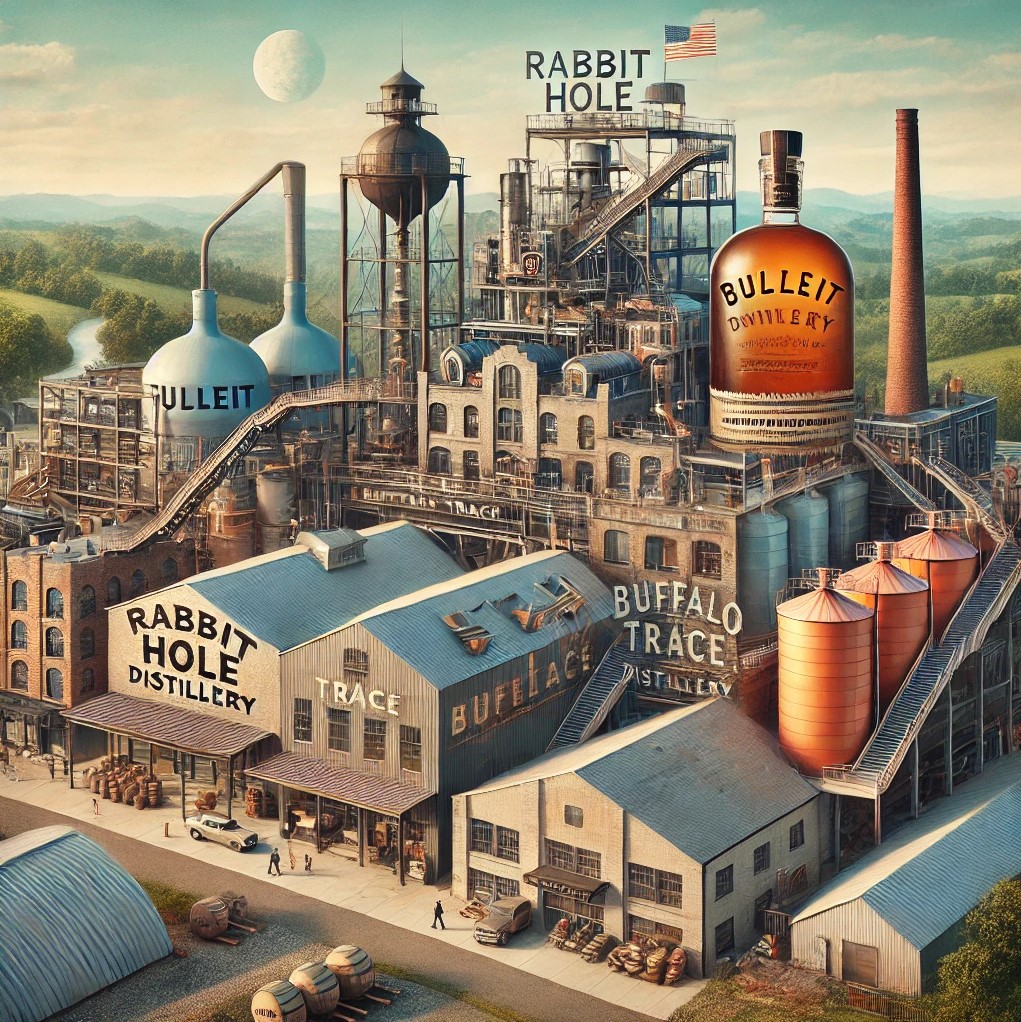In this fifth part of My Amazing Bourbon Trail Road Trip, I continue my exploration of The Bourbon Trail by taking a bus tour of three well-known distilleries. In case you missed them, check out the previous posts here:
My Amazing Bourbon Trail Road Trip – Part 1
My Amazing Bourbon Trail Road Trip – Part 2
My Amazing Bourbon Trail Road Trip – Part 3
My Amazing Bourbon Trail Road Trip – Part 4
Disclaimer: As an Amazon Associate, I earn from qualifying purchases. This means that if you click on a link and buy a product, I may receive a small commission at no extra cost to you.
We start out our third day by walking a (very) short distance from the hotel to Doc’s Bourbon Room. We were a few minutes early of their opening, but they graciously let us in. We sat at the bar and I admired the bourbon collection.

As I chatted with our server, he explained their collection of bourbon was one of the largest anywhere. I took video of the magnitude of the collection that covered every wall in the entire establishment!
For breakfast would be another first for me: a Kentucky Hot Brown Sandwich.

The Kentucky Hot Brown Sandwich is an open-face sandwich made with a slice of toast stacked with roasted turkey, a tomato slice, egg, and pieces of crispy bacon. Couple that with a cup of coffee and a mimosa and you have the breakfast of champions!
After breakfast, I made my way (by Lime Scooter) over to the Omni Hotel in Louisville, where my tour bus would be leaving from. The tour company I chose was Mint Julep Tours, and they did an excellent job of managing the day. It was a long day, leaving at 8:45am from the Omni and only arriving back at the Omni at around 6:45pm. Pricewise, it was $200 for me for the day, and that includes bus rides to the three distilleries (Rabbit Hole, Bulleit, Buffalo Trace), complimentary water on the bus, and a fantastic lunch.
Rabbit Hole Distillery

Leaving the Omni on the bus, we did a short tour of Louisville and hit some of the different areas of town and notable attractions. Around 9:15am, we made our first stop at Rabbit Hole Distillery, which is in Louisville and right around the block from Angel’s Envy Distillery. Our tour started at 9:30am, and we had our first tasting about 10 minutes later! I guess 9:40am is a good time to start drinking for the day!
As we all approached the distillery, its modern architecture stood out against the historic charm of Louisville. The sleek, glassy exterior of Rabbit Hole is a testament to its commitment to innovation and transparency—a fitting introduction to what we were about to experience. Upon entering, we were greeted with a warm welcome and a brief history of the distillery.


Founded by Kaveh Zamanian, a former psychologist turned whiskey enthusiast, Rabbit Hole is a relatively new player in the bourbon world. Established in 2012, the distillery quickly gained a reputation for its bold approach to bourbon making, blending traditional methods with a modern twist. Their philosophy revolves around creating unique, high-quality spirits that push the boundaries of conventional bourbon.
Our tour began with a visit to the main hallway. This is where we had our first taste of the Cavehill Kentucky Straight Bourbon, known for its smooth, honeyed notes and a hint of spice.

We learned about the carefully selected grains used in their mash bills. Rabbit Hole prides itself on using a diverse range of grains, including heirloom corn, malted barley, and rye. They believe that the quality of the grain directly impacts the character of the final product, and they source locally whenever possible.
We also heard the story of the distillery, and how it got its name. This is where we had our second taste, the Heigold High Rye Double Malt Bourbon.
Next, we moved into the fermentation room, where the sweet, earthy aroma of fermenting mash filled the air. The fermentation room is very industrial looking, and very open. We were able to see five different vats filled with “beer” (what it’s called when fermenting before being distilled) all at different stages, so it was great to see the progression of the fermentation process and how different the beer is (and tastes).
We also had a chance to see the stunning copper stills, which are custom-made for Rabbit Hole. These stills are crucial in distilling their whiskey, capturing the essence of the grains and shaping the distinct flavor profiles that Rabbit Hole is known for.





And then, time for our third tasting. This time it was the Dareringer, a unique sherry-finished bourbon with a velvety, rich profile. This is the one I walked away with from the store!

One of the highlights of the tour was seeing the technician filling barrels in the aging room. Rows of barrels were stacked high in the background, each holding the promise of future whiskey.

Rabbit Hole ages its bourbon in custom-toasted and charred barrels, which impart a rich depth of flavor. They are meticulous about their aging process, ensuring each batch reaches its full potential. Only some special barrels stay at the distillery. Most barrels are sent a few miles down the road to rick house for aging, and then brought back when time to bottle.
And then, once again, time for another tasting. This would be our final one, and it was the Boxergrail Rye Whiskey.
The tour concluded with a complimentary drink in the stylish Rabbit Hole bar, so we could sip while we wandered around the small store.
As we boarded the bus to head back, I couldn’t help but reflect on the experience. Rabbit Hole Distillery isn’t just about making whiskey; it’s about storytelling, creativity, and a deep respect for tradition. The tour was an immersive journey into the heart of bourbon craftsmanship, and I left with a newfound appreciation for the art of distillation. For anyone visiting Louisville, a trip down the Rabbit Hole is a must—it’s an experience that will leave you with a deeper understanding and love for bourbon. Cheers!

Lunch
Our next stop was for lunch at a beautiful restaurant called Limewater Bistro in Frankfort. I had thought we would be served a box lunch on the tour bus and a can of soda or a bottle of water, but boy was I wrong.

We had a sit-down lunch at Limewater Bistro and was able to order from a special menu offering one of three starters and a choice of 4 entrees. The decor of the restaurant is very upscale, with white tablecloths at each table and a floral centerpiece.


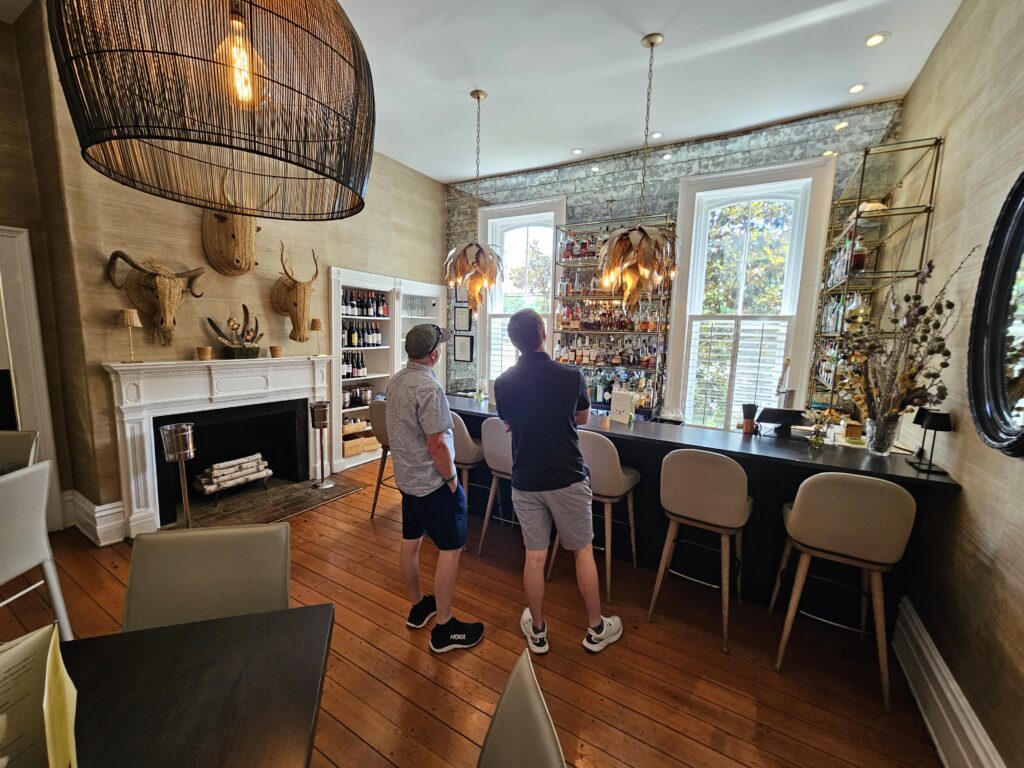


The restaurant was beautiful inside and out, and I you are in the area, I highly recommend you eat there.

I went for the fried chicken lettuce cups as an appetizer and the BLT for my main entree. Both were very good, and the BLT was especially filling. I believe for all of us we had some food in our stomachs and were ready for more bourbon!
Buffalo Trace Distillery

Back on the bus, we then headed to the Buffalo Trace Distillery, which for most of us on the bus, appeared to be the most excited about. However, everyone had a great time at Rabbit Hole which I think for most of us was quite a surprise. Frankfort is the capital city of the state of Kentucky and the seat of Franklin County.
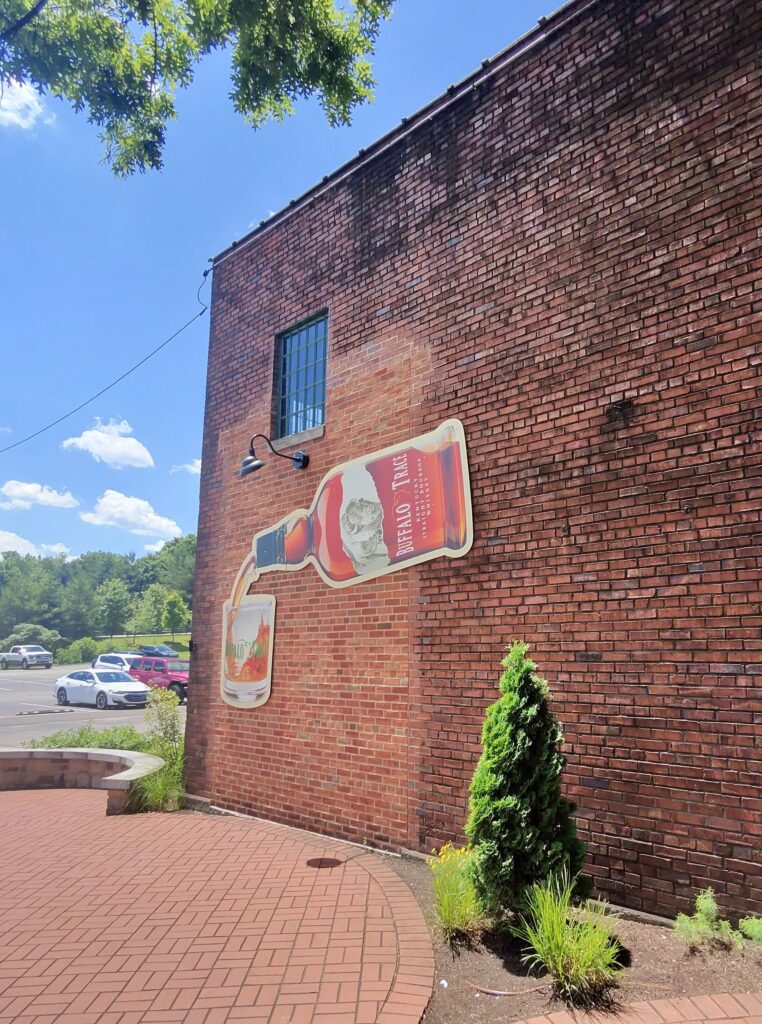
Buffalo Trace Distillery is a true gem in the heart of bourbon country. As we rolled into Frankfort, Kentucky, the anticipation built, and the sight of the historic distillery’s iconic brick buildings instantly transported us back in time.
Stepping off the bus, we were greeted by the unmistakable aroma of aging whiskey, a scent that felt both nostalgic and inviting. Our guide, a passionate and up and coming bourbon aficionado, welcomed us with a brief history of the distillery. Established in 1775, Buffalo Trace is one of the oldest continuously operating distilleries in the United States. It has survived wars, Prohibition, and numerous ownership changes, all while maintaining its dedication to crafting exceptional bourbon.
We started our tour at the visitor center, where we saw a collection of historic artifacts and learned about the rich heritage of Buffalo Trace Distillery. The distillery takes its name from the ancient buffalo crossing trails that led American pioneers westward, a fitting homage to the spirit of exploration and discovery.
Our next stop was the mash house, where we saw the massive cookers used to mix the grains—corn, rye, and malted barley. Buffalo Trace prides itself on using only the finest ingredients, and the careful selection of these grains is crucial to the flavor profile of their whiskies. We were fascinated by the immense scale of production, yet our guide emphasized the artisanal approach taken in every step.
The tour then led us to the fermentation tanks, where we witnessed the bubbling mash transforming into distiller’s beer. Our guide explained that the yeast strain used by Buffalo Trace Distillery has been carefully cultivated over the years, contributing to the unique flavor of their bourbon. The copper stills in the distillation area were equally impressive, with their gleaming surfaces hinting at the craftsmanship involved in the distillation process.



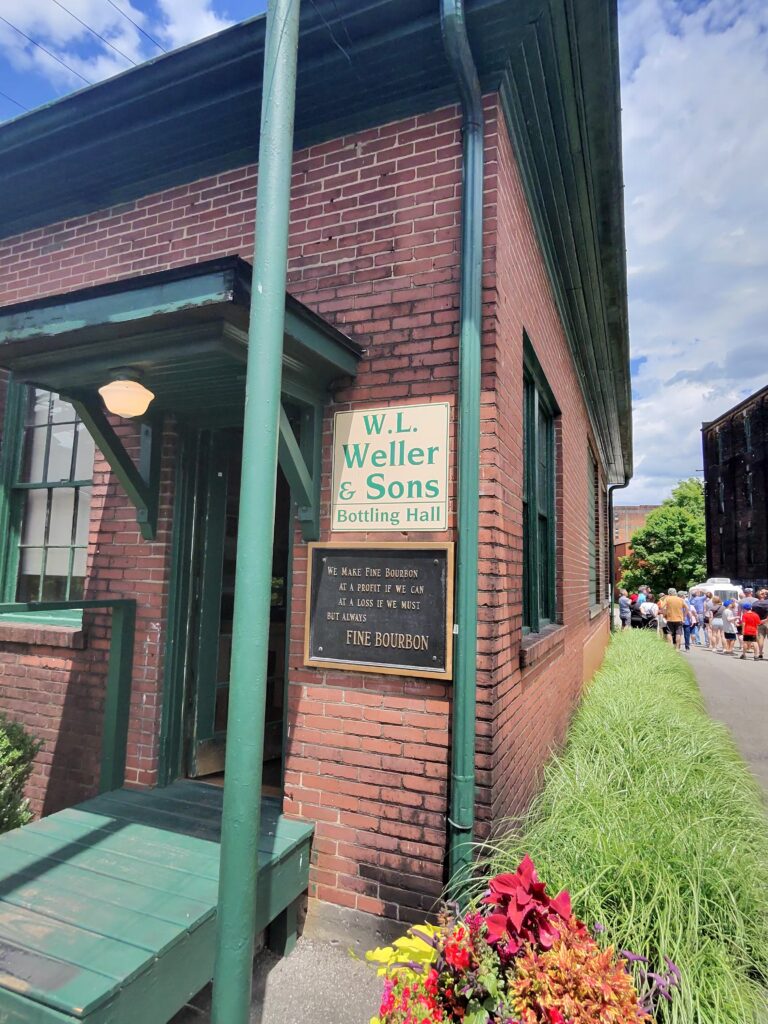

One of the highlights was visiting Warehouse C, one of the oldest aging warehouses on the property. The air was cool and heavy with the scent of maturing bourbon, a fragrance that seemed to encapsulate centuries of tradition. Buffalo Trace is known for its experimental warehouse techniques, and we learned about the different aging processes that give each expression its distinct character. The distillery ages its bourbon in new charred oak barrels, and the interaction between the whiskey and the wood is key to developing its rich flavors.




Finally, we arrived at the tasting room, a beautifully appointed space where we sampled some of Buffalo Trace’s most renowned products. We started with the namesake Buffalo Trace Bourbon, noted for its smoothness and rich caramel and vanilla notes. We also had the privilege of tasting Eagle Rare, a ten-year-old bourbon with a complex blend of toffee, honey, and leather flavors, and the coveted Blanton’s Single Barrel, known for its deep, robust profile and long, satisfying finish.
Both before and after our tour/tasting we were able to browse the very large retail store. Just know, Buffalo Trace produces some of the most sought-after bourbon on the planet and many of the brands such as Blanton’s, E.H. Taylor, and Pappy van Winkle are difficult to find; and if you do, you will usually pay far more than MSRP.
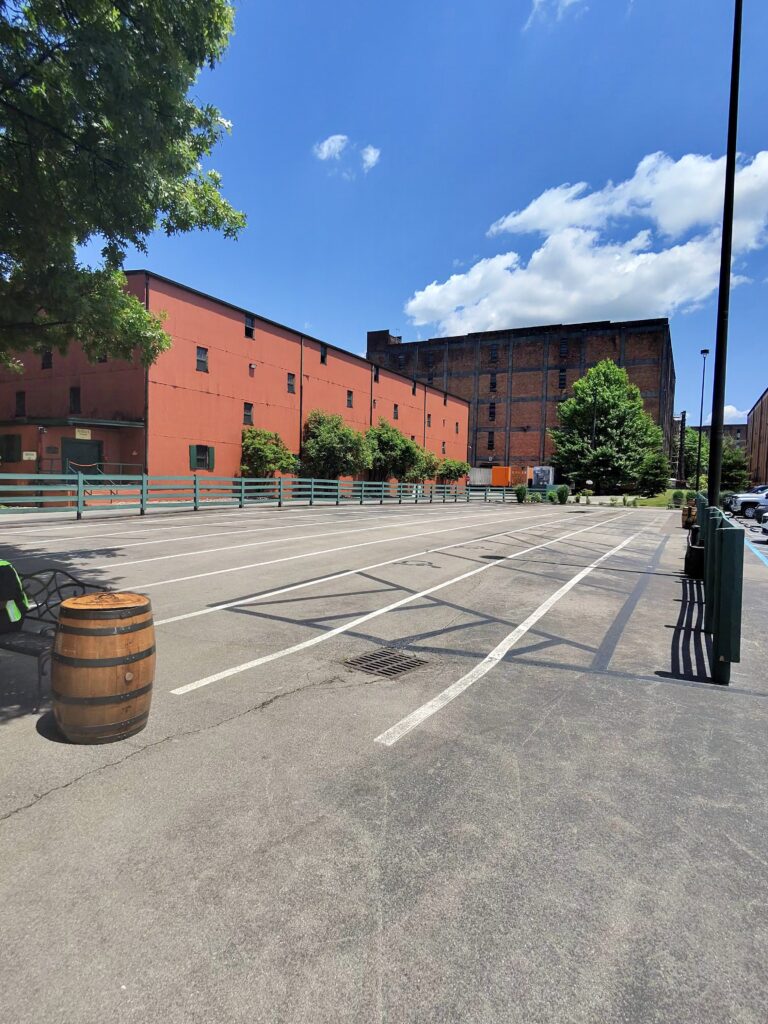
I say this because each day Buffalo Trace makes one of their allocated bourbons available for sale in the store, but only a limited quantity (although Pappy is not included in that). Patrons can get 1 bottle every 90 days.
So, because of all this, lines form at the distillery in the mornings for a shot at being able to purchase one of these allocated bourbons at MSRP. This is so popular they had to create an area outside the store for people to line up!
On this particular day, the bourbon they made available was E.H. Taylor Small Batch, so I grabbed my one allocation of it.
As we boarded the bus to leave, I couldn’t help but feel a deep appreciation for the craftsmanship and dedication that goes into each bottle of Buffalo Trace bourbon. The distillery’s rich history, combined with its commitment to quality and innovation, makes it a must-visit destination for any bourbon lover. This visit was more than just a tour; it was a journey through the heart of American whiskey heritage, and one that I won’t soon forget. Cheers to Buffalo Trace and the timeless art of bourbon-making!
Leaving Buffalo Trace Distillery, we then made our way to the Bulleit Distillery. I don’t believe I was too excited about this one, but I kept an open mind. In the end I had a great time at Bulleit, and one of the most unusual tastings I have ever done.
Bulleit Distillery

As our bus wound its way through the lush, rolling hills, the excitement among our group was palpable. We were about to step into the world of Bulleit, known for its bold, high-rye whiskies that stand out in the crowded world of bourbon.
Arriving at the Bulleit Distillery, located in Shelbyville, Kentucky, we were immediately struck by the blend of modern design and traditional charm. The distillery itself is relatively new, opened in 2017, but Bulleit has deep roots in bourbon history. It was originally founded by Augustus Bulleit in the 1830s, who crafted a high-rye whiskey known for its distinctive spice. The brand was revived by his great-great-grandson, Tom Bulleit, in 1987, and it has since grown into a beloved name in the industry.

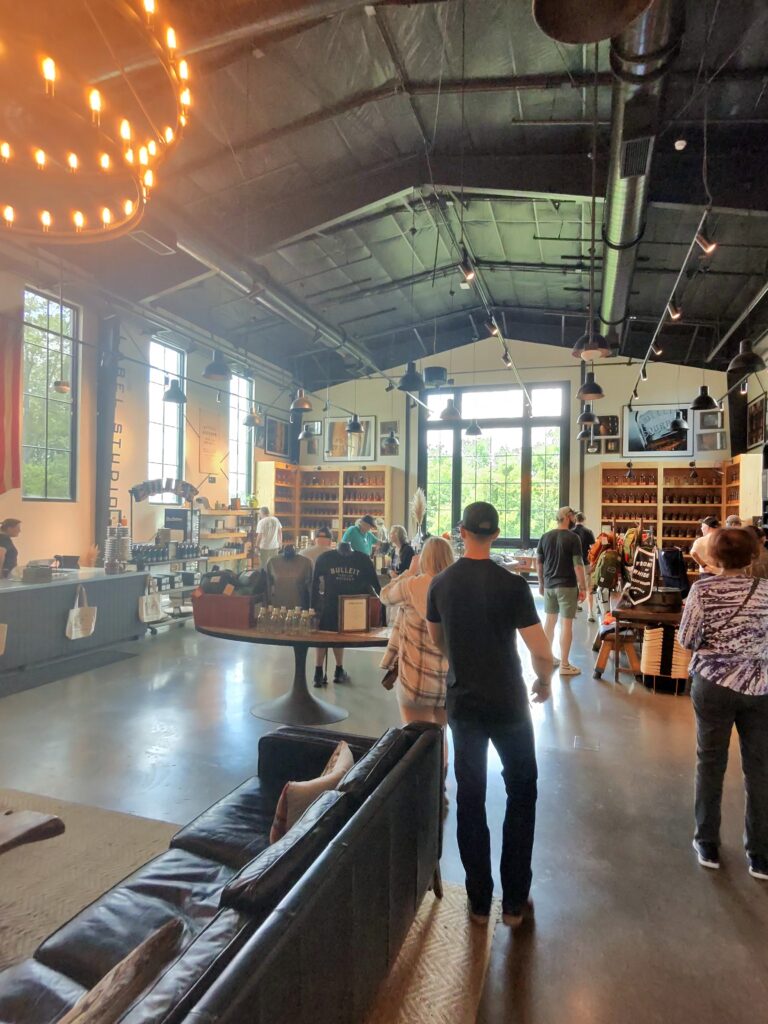
Our tour began in the visitor center, a beautifully designed space that reflects the distillery’s modern frontier aesthetic. We were greeted by our guide, who shared fascinating stories about the Bulleit family and the brand’s journey. One of the most striking aspects of Bulleit bourbon is its high rye content, which gives the whiskey a bold, spicy character. This unique flavor profile sets it apart from many other bourbons and has garnered a loyal following.
We then moved on to the heart of the operation: the distillation area. We took their small tour bus from the visitor’s center to the distillery, admiring the landscape the entire way.


The massive copper stills gleamed under the lights, a testament to the meticulous craftsmanship that goes into every bottle. I really liked being able to see the inside of a still and how the liquid moves through the still. Our guide explained the distillation process in detail, emphasizing Bulleit’s commitment to quality and precision. They use a proprietary yeast strain and a carefully selected mash bill, which includes a higher percentage of rye than most bourbons. This results in the spicy, robust flavor that Bulleit is known for.
In contrast to the Rabbit Hole Distillery where the fermentation takes place in the open and the fermentation tanks are open to the environment, Bulleit chooses to use the closed tank method, which encloses the “beer” and allows the necessary gases to escape. They prefer this method as they believe it gives them more control and product consistency.
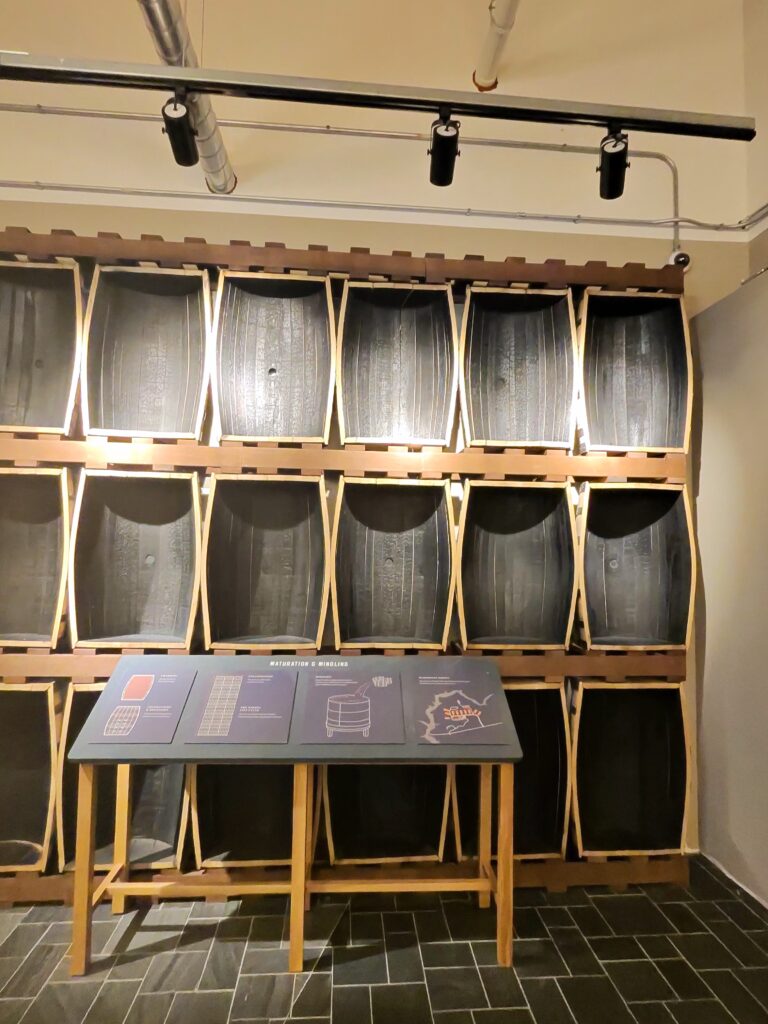



The barrels are not kept onsite, so we did not go into a barrel room. However, it is important to note that Bulleit stores its whiskey barrels in the warehouse vertically and not horizontally. They do this because they get more barrels per square feet, and it is easier to get barrels in and out of the storage.

The tour culminated in a tasting session, where we had the chance to sample some of Bulleit’s finest offerings. We started with the flagship Bulleit Bourbon, known for its rich, oaky flavor with hints of vanilla and dried fruit. Next, we tried the Bulleit Rye, a straight rye whiskey with a 95% rye mash bill, boasting a distinctive spiciness with notes of dried fruit and oak. The Bulleit Bourbon 10-Year-Old was a standout, offering a deeper, more complex flavor profile with smooth caramel and vanilla notes balanced by a hint of spice.
I might note the tasting experience was very different. We were seated in a room with our various whiskeys in front of us, as well as some small metal “eggs” with spices in them. In the background was soothing music. We tasted a bourbon, then we would smell a particular spice and retaste so we could experience the difference in taste. It was a very interesting tasting scenario, and I much enjoyed it.
After the tasting, I believe about half of the tour group went to the Bulleit Bar and purchased a cocktail to drink while browsing in the gift shop.
As we made our way back to the bus, I reflected on the experience. Visiting the Bulleit Distillery was not just about tasting great whiskey; it was a journey into the craftsmanship and innovation that define the brand. Bulleit embodies the spirit of the American frontier, combining tradition with a bold, forward-thinking approach to whiskey-making. It’s a must-visit for any bourbon enthusiast, offering a taste of history and the exciting future of bourbon. Cheers to a fantastic day at Bulleit Distillery!
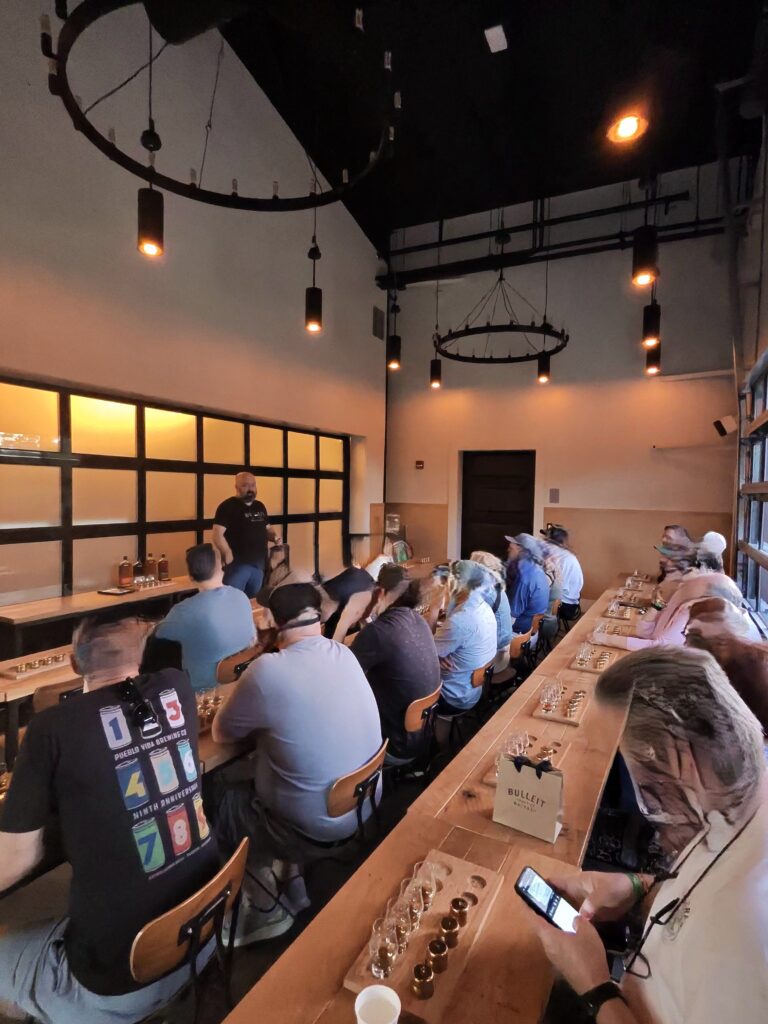




Summary
As the day came to an end, I made my way from the Omni hotel to a local brewery to meet up with my wife for a drink and dinner. She had taken another tour of the region while I was off to my distillery tours. We shared each other’s experiences over a drink, headed to dinner, and back to the hotel for some relaxation before we have to get back on the road and drive to Lexington, KY.
About the Author
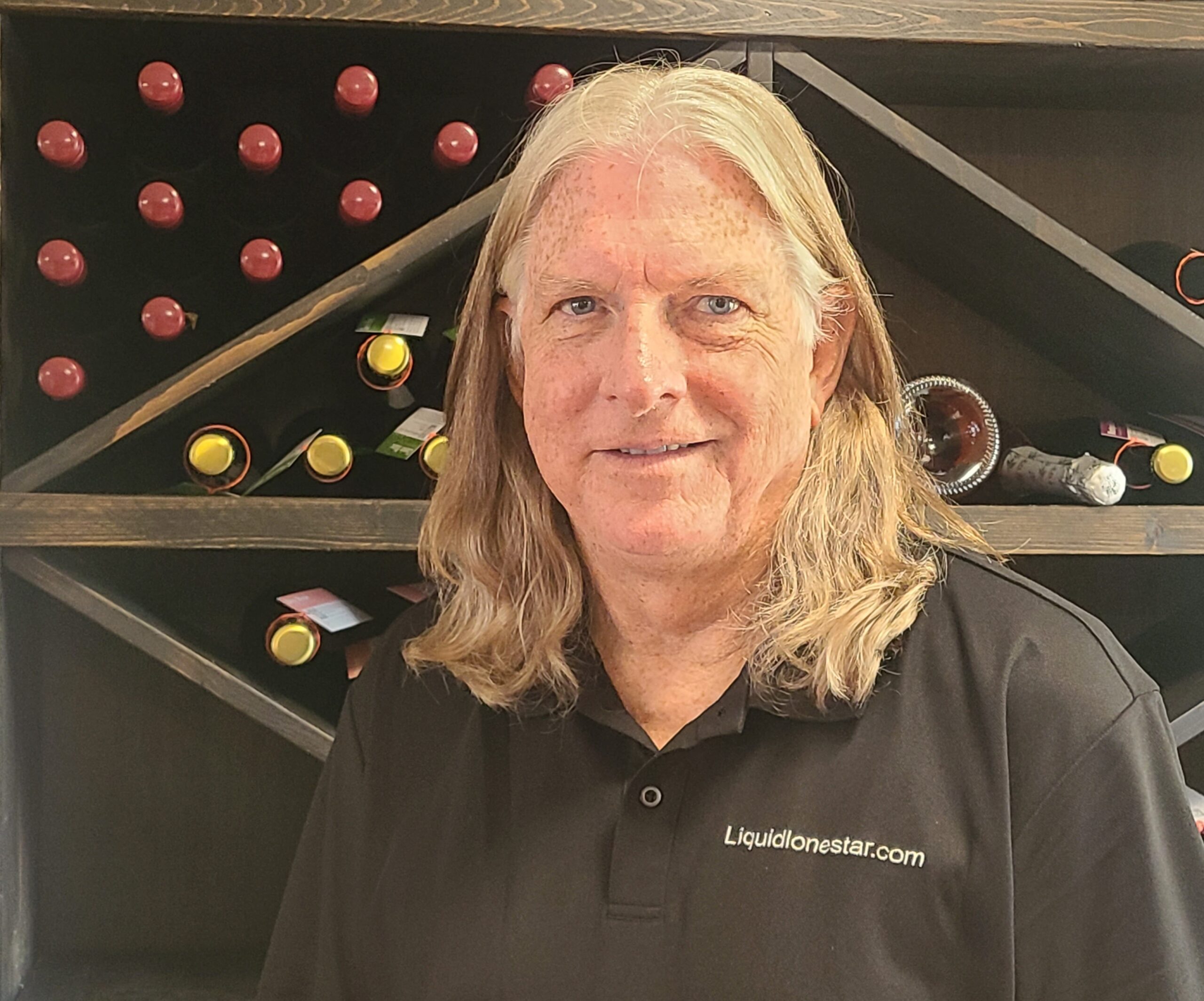
A native of Texas, Ken “Texan” Pierce is a renowned alcohol aficionado with decades of experience in the Texas wine, whiskey, and beer industry. With a vast number of alcohol production resources right in his back yard in the Texas Hill Country, Ken has made it his mission to promote and advance the Texas winemaking, distilling, and brewing industry across the country. Ken holds certifications from the Wine and Spirits Education Trust (WSET) for wine and is a Certified Texas Wine Ambassador. His ability to identify tasting notes and pairings makes him a respected authority within alcohol enthusiast circles. When he’s not reviewing the latest craft spirits, you can find Ken playing his guitar, trying to sing, and sipping on a Texas libation.

